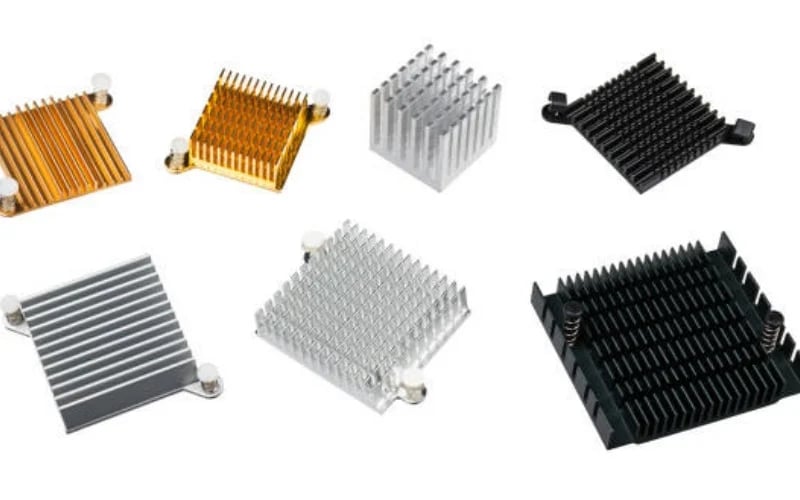LED (Light Emitting Diodes) technology has impacted the lighting industry with its long life span, energy efficiency and durability. The efficiency of LED lighting systems is attributed to the use of LED aluminium heat sink. LED aluminium heat sink is a cooling device that dissipates the heat generated by the LED light source. It is made of highly efficient aluminium and designed to absorb and distribute heat in a conductive and convective manner. This article investigates the importance of LED aluminium heat sink in efficient lighting systems.
Size and Shape of LED Aluminium Heat Sink
The size and shape of LED aluminium heat sink determines its cooling effectiveness. A thin and small heat sink may not adequately cool the LED light source, while a large heat sink may be impractical for small-sized lighting applications. The design of the LED aluminium heat sink needs to be tailored to the application and the environment in which it is placed. A well-designed LED aluminium heat sink distributes heat away from the LED light source to prevent overheating, a leading cause of LED failure.
Materials used in LED Aluminium Heat Sink
LED aluminium heat sink is commonly made of aluminium due to its thermal conductivity, thermal capacity and ease of manufacturing. Apart from aluminium, other materials such as copper, graphite and ceramic can be used for LED heat sink manufacturing. Copper has been used in LED heat sink manufacturing due to its superior thermal conductivity, while graphite is known for its lightness, strength, and excellent thermal dissipation. Ceramic materials offer high thermal conductivity, while being lighter and more durable than most metallic heat sink materials.
Working Mechanism of LED Aluminium Heat Sink
LED aluminium heat sink works by dissipating the heat generated by the LED light source. The heat sink absorbs the heat and transfers it through conduction to the fins. The fins increase the surface area of the heat sink, enabling heat to dissipate through convection. The heat sink's design is made in such a way that the surface area of the fins increases the amount of air flowing over the fins, thus increasing the thermal dissipation. This mechanism ensures that LED lights maintain their performance, and lifespan is prolonged.
Efficiency of LED Aluminium Heat Sink
LED aluminium heat sink is highly efficient in dissipating heat generated by LED lights compared to traditional incandescent bulbs. The heat generated by LEDs is directed to the heat sink, reducing energy wastage caused by the transfer of heat to surrounding materials and leading to higher efficiency. The efficiency comes as a result of LED Aluminium heat sink's high thermal conductivity, allowing for faster heat transfer and dissipation. LEDs using this technology have higher lumen output and lower heat generation, leading to a lower risk of system failure and longer lifespan.
Installation of LED Aluminium Heat Sink
LED Aluminium Heat sink is installed in different ways depending on the application requirements. The simplest installation is to attach the heat sink to the LED lamp with thermal adhesive or mechanical fasteners. A fan can also be added to increase air flow over the fins to improve the efficiency of heat dissipation. LED aluminium heat sink installation is vital for effective heat management and long-lasting LED performance.
Types of LED Aluminium Heat Sink
LED aluminium heat sink comes in different sizes and designs to suit a wide range of applications and lighting applications. The most common LED aluminium heat sink is the passive heat sink. It operates by natural convection alone, drawing in cooler air and forcing out hot air through the fins. Other types include active heat sinks, where fans or pumps help to increase air flow. Extruded and stamped heat sinks are other types that differ in their size and application.
Importance of LED Aluminium Heat Sink
LED aluminium heat sink is a crucial component of efficient LED lighting systems. It protects the LEDs from overheating, leading to extended lifespan and minimal failure. The heat sink increases the efficiency of LED lights, as well as preserving colour and light quality. With increased heat dissipation, the need for cooling fans is reduced, thus reducing noise and energy usage. LED aluminium heat sink also helps to protect the environment by reducing carbon footprint and improving energy efficiency.
Maintenance of LED Aluminium Heat Sink
To maximize the performance of LED aluminium heat sink, it needs to be cleaned periodically to remove debris and dust, which can reduce the ability to transfer heat efficiently. Cleaning can be done by blowing compressed air over the heat sink, using a soft brush for gentle removal of dirt and dust. Regular maintenance ensures a prolonged lifespan of LED aluminium heat sink and the LED lighting system.
Conclusion
In conclusion, LED aluminium heat sink is an essential component of LED lighting systems, as it contributes to efficient heat management, longer lifespan and environmental protection. Its efficiency and design ensure that LED lighting systems generate minimal heat, hence reducing the risk of overheating, which can lead to a shorter lifespan and reduced energy-saving benefits. For optimal LED lighting performance and enhanced energy efficiency, adopting LED aluminium heat sink technology is essential.
Quote Inquiry
Contact us!

